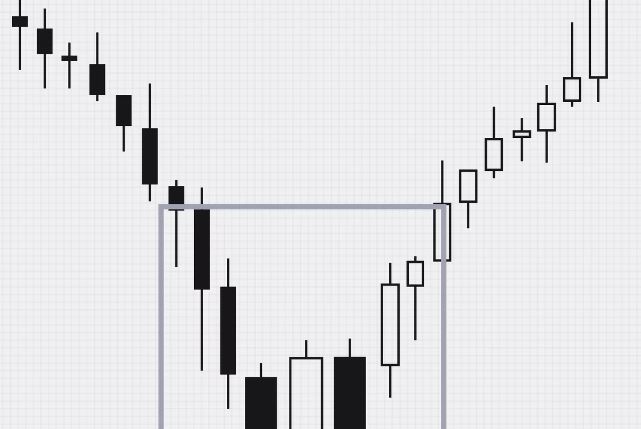Trading and investing require an understanding of chart patterns to make informed decisions. Candlestick charts often display the stick sandwich pattern, which is a significant pattern. It is a highly reliable pattern for predicting trend reversals. In assessing price movements and making trading decisions, traders commonly use it in various markets, including the Forex market.
There are three candlesticks in a stick sandwich pattern, and the formation of this pattern can indicate a market shift. A bullish stick sandwich can take two forms: a bearish stick sandwich and a bullish stick sandwich.

Traders need to understand each market’s rules and implications. This article shows an in-depth look at the anatomy, types, and practical applications of this fascinating candlestick pattern.
Introduction To Stick Sandwich Pattern
Stick sandwich candlestick patterns offer traders a glimpse into potential market reversals, making them unique in candlestick charting. The three-candle layout of this pattern makes it easily recognizable by traders, enabling them to predict market trends as soon as they occur. You can gain valuable insight into price movements by understanding this pattern, regardless of whether you’re navigating the Forex market or another investment avenue.
It must be stated how important the stick sandwich candle pattern is. This pattern is an essential tool for traders entering or exiting long positions or those aiming to manage risk. By providing clues about future price direction, it assists traders in gauging market sentiment. The bearish stick sandwich and bullish stick sandwich patterns are examples of the pattern. Traders should consider each variant’s implications before making their decisions.

How To Trade Stick Sandwich Patterns
There is more to trading with the stick sandwich pattern than just recognizing patterns. To achieve this, it is necessary to have a strategic approach that incorporates risk management, volume analysis, and an understanding of support levels. These factors contribute to making sound trading decisions in both bullish and bearish markets.
Risk Management
To trade this pattern effectively, managing risk is the first step. Stop losses are used to limit losses, which is a common approach. Protecting your investment requires understanding how much loss you will take and how much drawdown you are ready to endure. Market outlooks and overall trading objectives should align with this risk management strategy.
Volume And Support Level
The volume of the product is also essential to consider. The stick sandwich pattern is often more reliable when it forms during a period of high trading volume. Identification of the support level is equally important as volume. Support levels aligned with patterns can provide additional confirmation, enhancing your trade’s security.
Timing And Entry Points
In the event of a stick sandwich pattern, traders often hold off on entering and exiting a trade until they receive additional confirmation. The confirmation may appear as another candlestick pattern, like the morning star, or as a favorable move in closing prices. The pattern becomes more effective when the right timing occurs, and trade outcomes improve.
By incorporating these strategies, traders can maximize the potential of stick sandwich patterns in their trading playbooks. An integrated approach ensures you are prepared to navigate the complexities of Forex trading and other investment markets, whether looking for trend reversals or contemplating long positions.
Conclusion
Stick sandwiches are a valuable analytical tool for detecting reversals, especially in more extensive trading ranges. The ability to differentiate between bullish and bearish stick sandwiches can significantly impact your trading decisions. Traders in different markets, including Forex, equities, and bonds, can benefit from these patterns, which provide valuable market sentiment and price direction information. However, it’s essential to remember that while these patterns are helpful, they could be more foolproof. Trading effectively requires effective risk management. It’s critical to set a stop loss during long positions and determine your maximum drawdown when dealing with a market that’s turned against you. To maximize opportunities and minimize losses, traders must combine pattern recognition with solid risk management.


